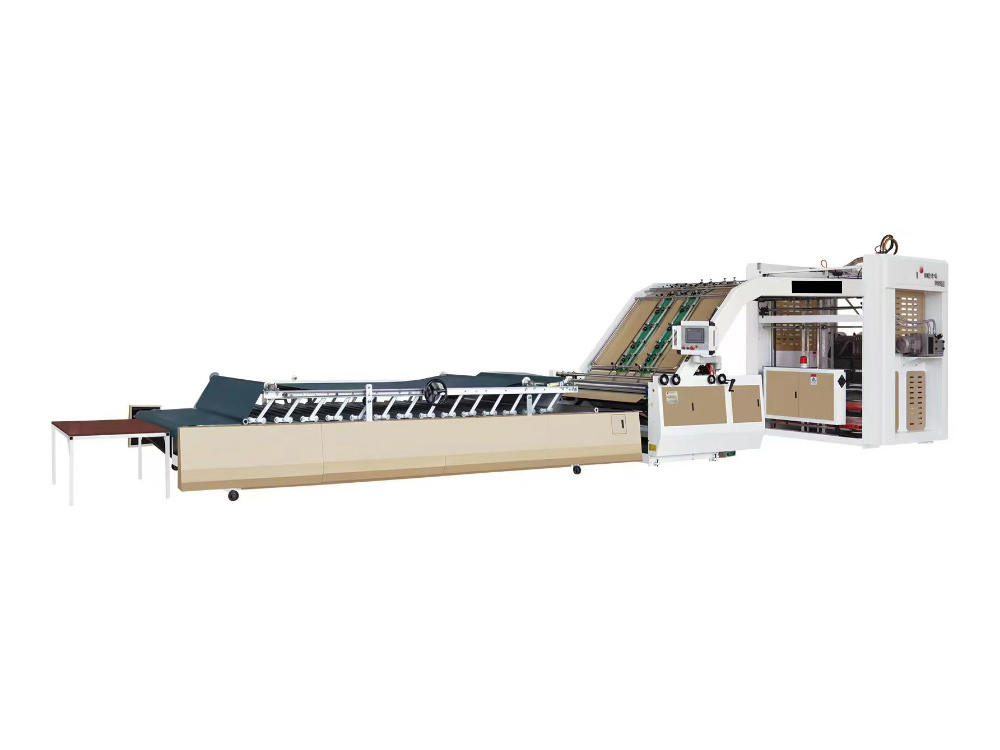Understanding the Benefits and Functionality of Semi-Automatic Flute Laminators
May 30,2025
In the realm of manufacturing and processing machinery, particularly in the packaging sector, a semi-automatic flute laminator stands out as a crucial piece of equipment. This machine is designed to apply a protective laminate to fluted materials, commonly used in various packaging applications. By understanding its functionality and advantages, professionals can make informed decisions that enhan

In the realm of manufacturing and processing machinery, particularly in the packaging sector, a semi-automatic flute laminator stands out as a crucial piece of equipment. This machine is designed to apply a protective laminate to fluted materials, commonly used in various packaging applications. By understanding its functionality and advantages, professionals can make informed decisions that enhance productivity and efficiency in their operations.
A semi-automatic flute laminator combines manual and automated processes, providing flexibility that can accommodate varying production needs. Unlike fully automatic systems, which may require significant upfront investment and entail complex operational protocols, semi-automatic models allow operators to maintain hands-on control while benefiting from automation's efficiency. This balance makes them particularly appealing for small to medium enterprises that need to optimize their workflow without compromising quality or increasing overhead costs.
One of the key advantages of a semi-automatic flute laminator is its adaptability to different material types. It can handle a range of substrates, including paper, cardboard, and plastic, making it versatile for various applications. This capability ensures that businesses can cater to diverse customer requirements, from packaging food products to creating custom displays. The ability to laminate fluted materials effectively also enhances the durability and aesthetic appeal of the final products, which is essential in a competitive market.
Furthermore, the operation of a semi-automatic flute laminator typically involves an easy setup process, allowing for quick changeovers between different jobs. This feature is particularly beneficial for companies that handle multiple projects or smaller batch sizes. Operators can swiftly adjust the machine settings for different materials or thicknesses, resulting in reduced downtime and increased productivity.
Another aspect to consider is the cost-effectiveness of utilizing a semi-automatic flute laminator. The initial capital outlay tends to be lower than that of fully automated systems, making it accessible for businesses looking to streamline their production without hefty investments. Additionally, the operational efficiency gained from using such machines can lead to significant savings in labor costs and material wastage over time.
Lastly, maintenance and support are often more manageable with semi-automatic systems. Since operators are directly involved in the laminating process, they can easily identify issues and perform routine maintenance tasks, reducing the likelihood of significant downtime caused by equipment failures.
In summary, semi-automatic flute laminators represent a practical and efficient solution for businesses in the packaging machinery industry. By combining the benefits of automation with the flexibility of manual control, these machines meet the demands of various production environments, enhancing overall operational efficiency and product quality. For manufacturers looking to optimize their packaging processes, investing in a semi-automatic flute laminator could be a strategic decision that pays off in the long run.
A semi-automatic flute laminator combines manual and automated processes, providing flexibility that can accommodate varying production needs. Unlike fully automatic systems, which may require significant upfront investment and entail complex operational protocols, semi-automatic models allow operators to maintain hands-on control while benefiting from automation's efficiency. This balance makes them particularly appealing for small to medium enterprises that need to optimize their workflow without compromising quality or increasing overhead costs.
One of the key advantages of a semi-automatic flute laminator is its adaptability to different material types. It can handle a range of substrates, including paper, cardboard, and plastic, making it versatile for various applications. This capability ensures that businesses can cater to diverse customer requirements, from packaging food products to creating custom displays. The ability to laminate fluted materials effectively also enhances the durability and aesthetic appeal of the final products, which is essential in a competitive market.
Furthermore, the operation of a semi-automatic flute laminator typically involves an easy setup process, allowing for quick changeovers between different jobs. This feature is particularly beneficial for companies that handle multiple projects or smaller batch sizes. Operators can swiftly adjust the machine settings for different materials or thicknesses, resulting in reduced downtime and increased productivity.
Another aspect to consider is the cost-effectiveness of utilizing a semi-automatic flute laminator. The initial capital outlay tends to be lower than that of fully automated systems, making it accessible for businesses looking to streamline their production without hefty investments. Additionally, the operational efficiency gained from using such machines can lead to significant savings in labor costs and material wastage over time.
Lastly, maintenance and support are often more manageable with semi-automatic systems. Since operators are directly involved in the laminating process, they can easily identify issues and perform routine maintenance tasks, reducing the likelihood of significant downtime caused by equipment failures.
In summary, semi-automatic flute laminators represent a practical and efficient solution for businesses in the packaging machinery industry. By combining the benefits of automation with the flexibility of manual control, these machines meet the demands of various production environments, enhancing overall operational efficiency and product quality. For manufacturers looking to optimize their packaging processes, investing in a semi-automatic flute laminator could be a strategic decision that pays off in the long run.
TAG:
Contact Us
Phone/WhatsApp
Address
QuZhuang Village, DongGuang County, CangZhou City, HeBei Province, China







